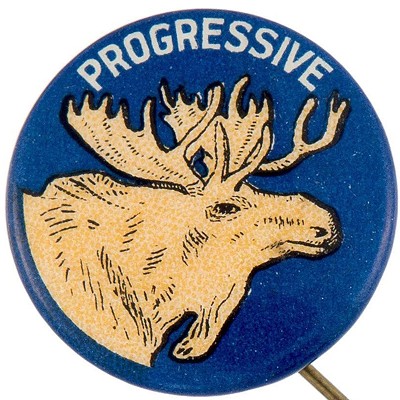by Cara Gardner
Nothing says urban sprawl quite like the strip malls lining I-95 between Coeur d'Alene and Hayden. And nothing says unfettered development like the cul de sacs springing up in the Rathdrum Prairie. Spokane is stretching itself, too, with gangling appendages in every direction. As more and more people move to the Inland Northwest in search of natural beauty and a more rural lifestyle, some landowners -- concerned that eventually there won't be any undeveloped places left -- are finding ways to protect their acreage. One of the options is to join a land trust and create a conservation easement, thereby ensuring permanent protection for specified acreage -- even after the landowner is long gone, and no matter who ends up owning the property.
"Working with a land trust is finding a way to keep the land the way it is and to maintain traditional uses of that land," says Chris DeForest, executive director of the Inland Northwest Land Trust. "It's a very fast-growing movement. There are over 1,400 local and regional land trusts in the country. Over a million people belong to land trusts."
Land trusts work with property owners on the conservation easement, and with the owners to determine the parameters of preservation. The easement is filed with the deed, and all succeeding owners of the land must abide by the specifics of the conservation easement -- a set of procedures monitored by the land trust.
Creating conservation easements through local land trusts has long been a popular choice for preservationists back East. Land trusts in New York City, for example, protect city blocks where gardens grow or parks provide green spaces. Until recently, many Western landowners haven't faced the struggle of over-development -- because there's always been plenty of space. The Inland Northwest Land Trust currently holds 20 conservation easements and has assisted organizations like the Nature Conservancy, the Spokane Parks Department and Ducks Unlimited on about 20 others. Starting out as an all-volunteer organization in 1997, the INLT is now a fast-growing, well-staffed organization. It seems that an increasing number of landowners want to make sure their acreage remains a living landscape for centuries to come.
"I see tremendous changes in the familiar landscapes," DeForest says. When he was a boy, his family would always vacation on Lake Pend Oreille, DeForest continues, "and seeing the changes going [on in] Rathdrum Prairie, the stop lights marching north and the development in all direction -- well, I have a couple of 90-plus-year-old friends who've shared the place at Lake Pend Oreille, and they've looked out on the lake and down the shore now for 90 years. They're urging us to protect what's there. They have a greater sense of time."
Land trusts are more than just acts of conservation that ensure acreage will remain hospitable habitat for various wildlife; DeForest says that when landowners take the initiative to officially protect their land, it can give them a strong sense of peace: "It's something people can do -- they have some control over their own lands and they see that it's going to be protected."
Peaceful is exactly how Robbi Castleberry feels about property now that she has several conservation easements, two of which border Palisades Park, a wildlife habitat near the Indian Canyon Golf Course. One of the easements is just 16 acres, but Castleberry says it's a special place to her. That piece of land sits directly across from the driving range.
"It has a great deal to do with how you feel about the land and everything you remember," Castleberry says, trying to explain why she passed up tempting offers from developers who wanted to build condos on her land. "[This] is an area that as a child I used to come and water the horses that the [previous] landowners had. We used to walk through here."
Now Castleberry and her husband Vick have their own horses on the property; during the winter, they use it to cross country ski. Castleberry says her emotional attachment to the land made her decision very easy.
"We'd take a glass of wine and sit up there and look around and say, 'What do we want? What's the real desire for this land in the future?' And it became evident to us that it wasn't condos."
It's a realization many landowners are having. Land trusts are growing so fast that they're being formed at a rate of two per week. Land trusts in America protect about 800,000 new acres every year, according to the Land Trust Alliance. There are 10 land trusts in Idaho, which protect almost 44,000 acres; in Washington state, there are 32 land trusts protecting nearly 85,000 acres. Land trusts don't just protect property that harbors wildlife or has old growth; working farms, open space and working forests are also widely protected, and the owner has the power to decide just what can and can't be done on the land.
Companies, too, have joined land trusts in order to preserve acreage. For example, the lumber company Potlatch is the largest private landowner in Idaho, with 660,000 acres. For the past several years, it has worked with the Idaho Department of Lands along with the Trust for Public Land, a national land trust, to preserve thousands of acres in an area recreationalists and environmentalists don't want to see developed, the St. Joe River Basin. The Trust for Public Land is seeking both federal dollars and private donations through several stages in order obtain the land. Currently, it has purchased more than 25,000 acres in the St. Joe River Basin, and it has a goal of raising about $1.2 million in order to obtain another chunk by September 2005.
"What it is," explains Stephanie Taylor, director of development in the Northwest region for the Trust for Public Lands, "is a working forest conservation easement so Potlatch can continue to harvest trees. It also looks at repairing corridors and puts more of a buffer [on the land] than typical forest practices. It allows traditional public usage for folks who like to go hunting, berry picking, just getting up in the woods -- it allows that. There is also a 107-acre cedar old-growth stand that's preserved forever. Potlatch can't harvest that."
Despite his dismay at the rate of urban sprawl -- it's estimated to eat up two million acres a year nationally -- DeForest, with the INLT, stresses that his organization is not anti-development. "We're nonpolitical, nonpartisan. We don't take positions on specific developments, either for or against," he says.
This, in some ways, is why so many different landowners find they can work with land trusts; the organizations usually take pains to steer clear of conflicts regarding controversial developments. They work with willing landowners, whether they are citizens, companies or government entities. Still, it's clear that land trusts are about preservation despite the forces of change. DeForest says that although development in living landscapes is often inevitable, conservation easements ensure at least some small pieces of land will remain the same.
"Between Post Falls and Coeur d'Alene, there is a 158-acre [conservation easement] on the Hanson property, which is an old family homestead, forest, wetland meadow and beautiful wildlife habitat, perched above the [Spokane] River and above Cougar Bay on Blackwell Hill," DeForest says as he discusses all the newly built, elaborate summer homes that line the banks of the Spokane River, with their pastel siding and stadium lawns. He describes the importance of having a tangible natural history, of balancing rapid changes in the landscape with places that don't transform as quickly.
For some landowners, like Potlatch, working with land trusts to preserve acreage is a positive way to contribute to the community while maintaining control over its property. For others, like Castleberry, preserving her land was a deeply personal decision. She says preserving the land is the best long-term investment she could make.
"This area is so important to the enjoyment of our life," she says, "We have all kinds of animals -- deer are constant. We have an occasional moose that runs through and a bear that visits every now and again. We have quail, pheasant, hawk and owls. We're very protective of the [Palisades] park and our neighborhood. When we were able to acquire this land, it was very special."
Publication date: 11/25/04
Living Landscapes
[
{
"name": "Broadstreet - Instory",
"component": "25846487",
"insertPoint": "4",
"requiredCountToDisplay": "4"
},{
"name": "Broadstreet - Empower Local",
"component": "27852456",
"insertPoint": "8",
"requiredCountToDisplay": "8"
},{
"name": "Broadstreet - Instory",
"component": "25846487",
"insertPoint": "12",
"requiredCountToDisplay": "12"
},{
"name": "Broadstreet - Instory - 728x90 / 970x250",
"component": "27852677",
"insertPoint": "18",
"requiredCountToDisplay": "18"
},{
"name": "Broadstreet - Instory",
"component": "25846487",
"insertPoint": "5th",
"startingPoint": "23",
"requiredCountToDisplay": "24",
"maxInsertions": 100
}
]















